Recently I have been having discussions with some of my colleagues regarding different types of power backup devices - specifically, why some UPS units, inverters, and generators cost a lot more than others, and whether or not it was worth paying the higher price. To illustrate some of the points I was trying to make, I borrowed an oscilloscope (specifically, a Fluke 98 Series II Automotive Scopemeter) and took some measurements of the power produced by various backup devices.
Notes about reading these scope traces: The grey line on the left of the plot shows the trigger point, and the step icon shows the trigger level. The little black rectangle towards the right of the plot shows the zero voltage level. All plots were made with the scope in DC coupled mode so that DC offsets in the AC signal would be shown. As I did not have a printer or PC interface for the scope, I had to take pictures of the scope screen with a digital camera. Please excuse the blurry images.
Prices listed on this page are estimated street prices from the manufacturer's website as of 6/2005.
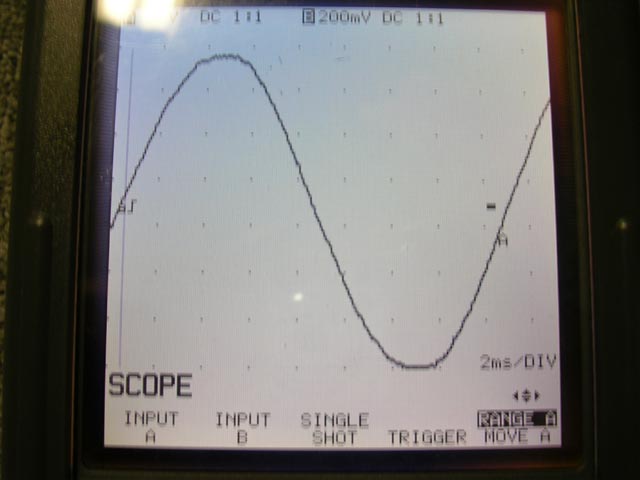
This is what comes out of my wall socket thanks to the Potomac Electric Power Company. A nice sine wave, although the peaks are a little flat. Consider this the baseline.
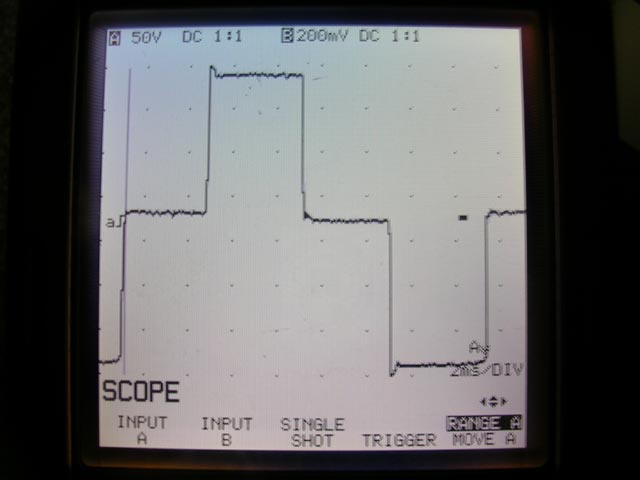
This is what comes out the socket on the back of an APC Back-UPS 650 when the UPS is on battery with no load connected. This is what the marketing department calls a "modified sine wave." As you can see, it's really not very sinusoidal at all. Most inexpensive UPS units and DC/AC inverters output something like this when on battery. Some really old and really cheap UPS units put out a plain square wave as opposed to a stepped square wave like this, but I have never personally seen one like that.
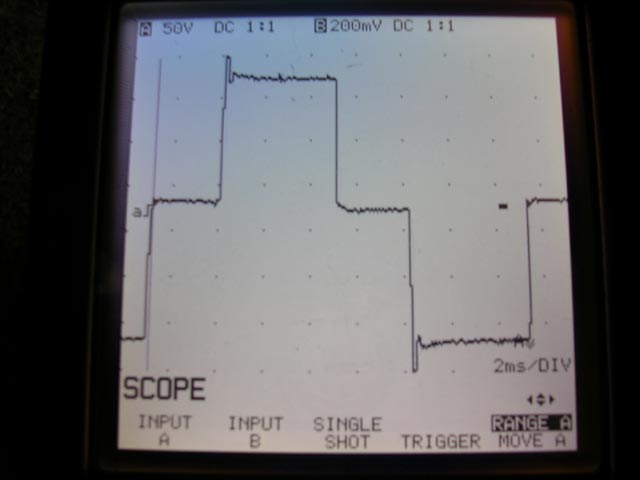
This is the output of the APC 650 when powering a monitor and computer. The load does not have much effect on the output quality of the inverter except for a little more ringing after each voltage step.
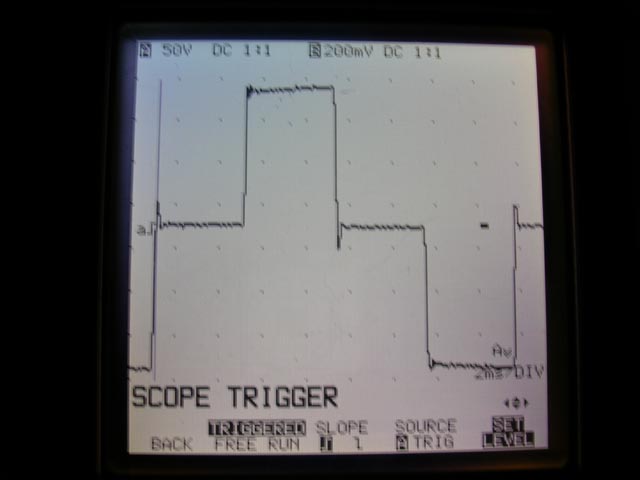
This is an APC Back-UPS Pro 500 powering a monitor and computer. The output is the same as the older Back-UPS 650.
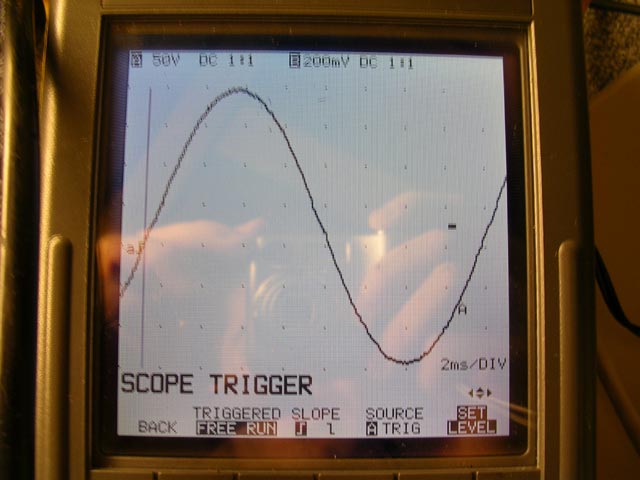
This is the output of an APC Smart-UPS 700 running on batteries with no load connected. This UPS puts out an actual sine wave, which appears to actually be more sinusoidal than what comes out of the wall socket. This is why APC charges 50-100% more for a Smart-UPS than a comparable Back-UPS.
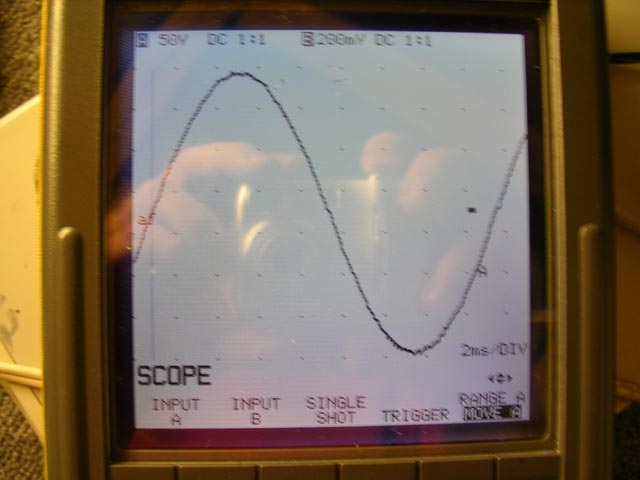
This is the APC 700 running at 80% load powering a (big) computer and monitor. The output has a little bit more noise than running with no load, but still looks pretty darn good..
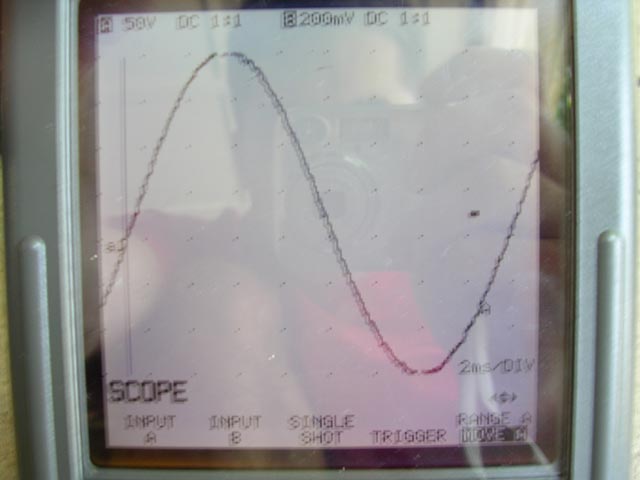
This is the AC output of a Honda EU2000i inverter generator running in economy mode with no load connected. The Honda EU generator line uses a gasoline engine to run a high-frequency alternator. The alternator output is fed into some power electronics that output 120VAC at 60 Hz.
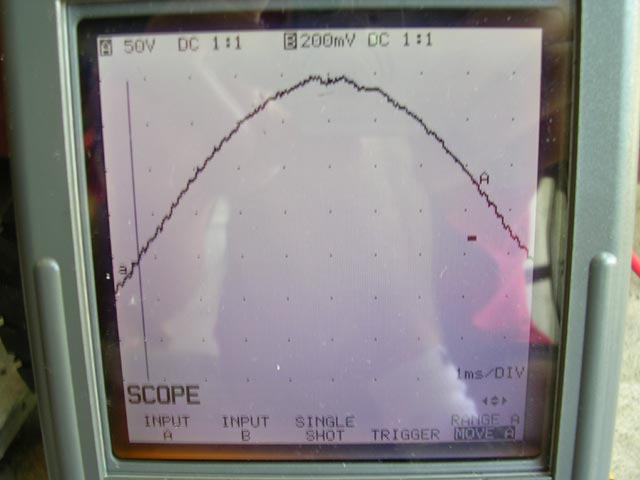
This is the output of the EU2000i with a shorter time scale. The output is a little noisier than the wall socket or the Smart-UPS 700, but is still pretty darn good.
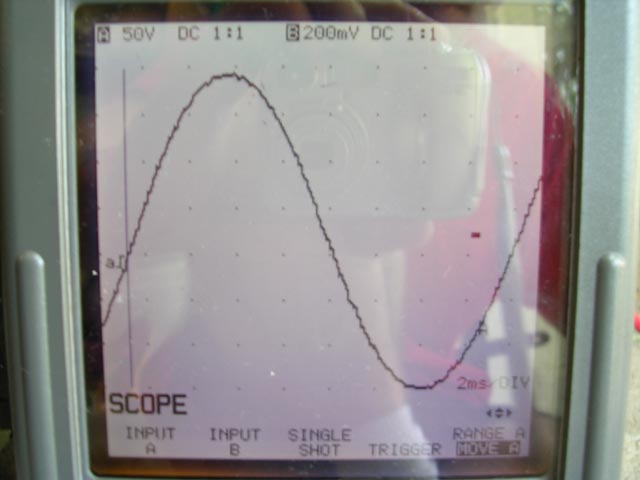
The EU2000i running an 8 amp inductive load (a boat blower.) The peaks of the sine wave are a bit lower, but overall it's not much different from running with no load.
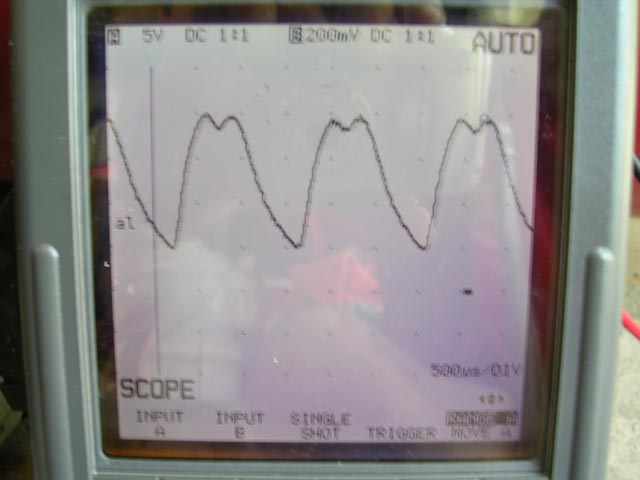
While the AC output of the EU2000i is very good, the same cannot be said about its 12 volt "DC" output. The average voltage of this waveform is somewhere around 12 volts, but there's a 15 volt ripple. According to the wiring diagram in the generator manual, the DC output is produced by a low-voltage winding on the main alternator which is fed through a simple 4-diode bridge rectifier. There is no filtering or regulation on the DC output. The DC connector on the generator is labeled "battery charging only", and they mean it. Batteries generally don't care if you charge them with lousy power, but try and run any sort of electronics off of this and there's a chance you might see smoke.
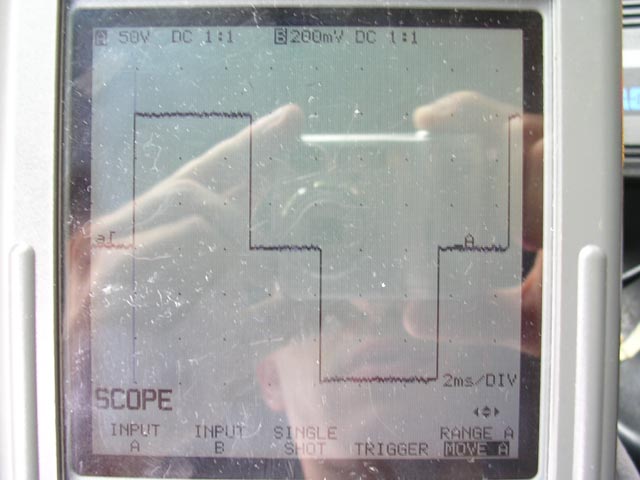
This Statpower inverter that gives you 120VAC from a 12VDC car battery puts out a modified sine wave. Nothing here that we haven't already seen before.
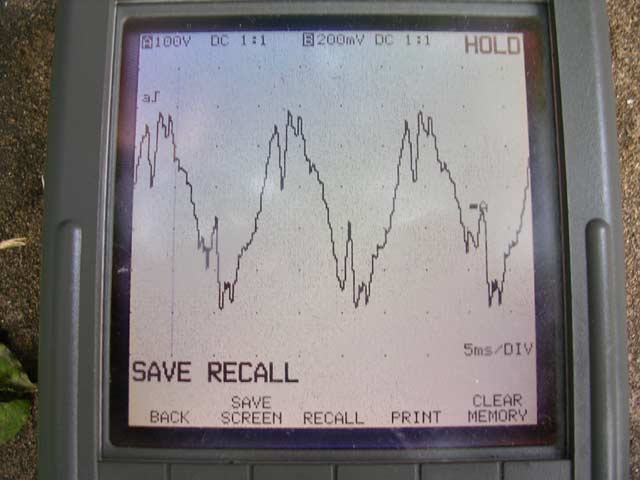
This is an example of an inexpensive generator. As you can see, it's inexpensive for a reason. This is the output of the generator while running with no load connected. It vaguely resembles a sine wave... but yeah. Eeeewww. (Interestingly, I can find no mention of this model and very little mention of this company on the Internet. The owner of this generator says it was purchased through a mail order catalog.)
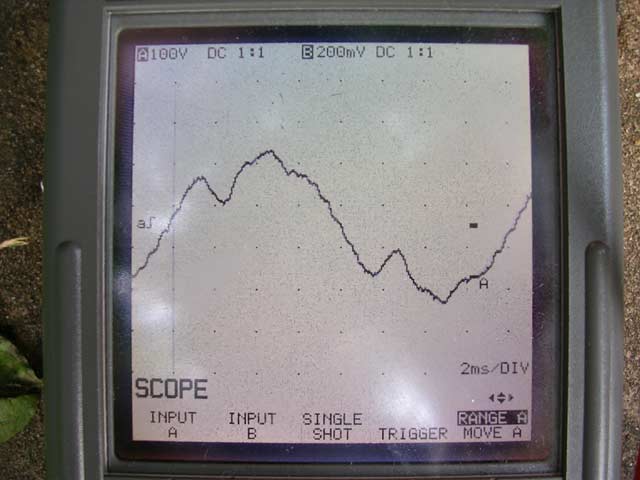
This is the Alton generator with a load connected (a ~60W table lamp.) It's not as nasty as what you see with no load connected, but is still not exactly what I'd call clean power.
A standard 120V wall socket has a "hot" connection, a "neutral" connection, and a ground. If you measure the AC voltage between hot and ground, you will see 120V. Neutral and ground are tied together in your breaker box and measuring between the two at a wall socket should read 0. (If it measures more than a few volts, it's a potential safety hazard and you should probably call an electrician.) Measuring between hot and neutral yields 120V. Appliances draw current through the hot and neutral terminals and are connected to ground for safety. Appliances do not draw current through the ground connection.
A standard 240V wall socket has two "hot" terminals that are 180 degrees out of phase and a ground. Measuring between the two hot terminals will show 240V; measuring between either hot and ground will yield 120V. Appliances draw from the two hot terminals and therefore see 240V.
However, I measured several of the inverter devices here (the Back-UPS 650, 500, and the Honda generator) and noted that when the inverter is in operation both hot-ground and neutral-ground read around 60 volts. When you measure between hot and neutral, the reading is 120V. The 120V sockets on an inverter appear to operate similarly to 240V utility sockets. Since the appliance sees the 120V between hot and neutral, it should operate properly. However, I've seen wiring diagrams for older electronics (specifically a Hallicrafters SX101 ham radio from sometime in the fifties or sixties) that only have a two prong plug and connect the neutral line of the plug to the metal chassis as a ground! If you plug such a device into an inverter that has a good connection to earth ground, and touch the metal chassis of the device, you could get a shock. The manual for the Honda generator has a bunch of warnings about ensuring that grounds are connected in accordance with applicable electrical codes, and this is probably why.
Jesse Kovach